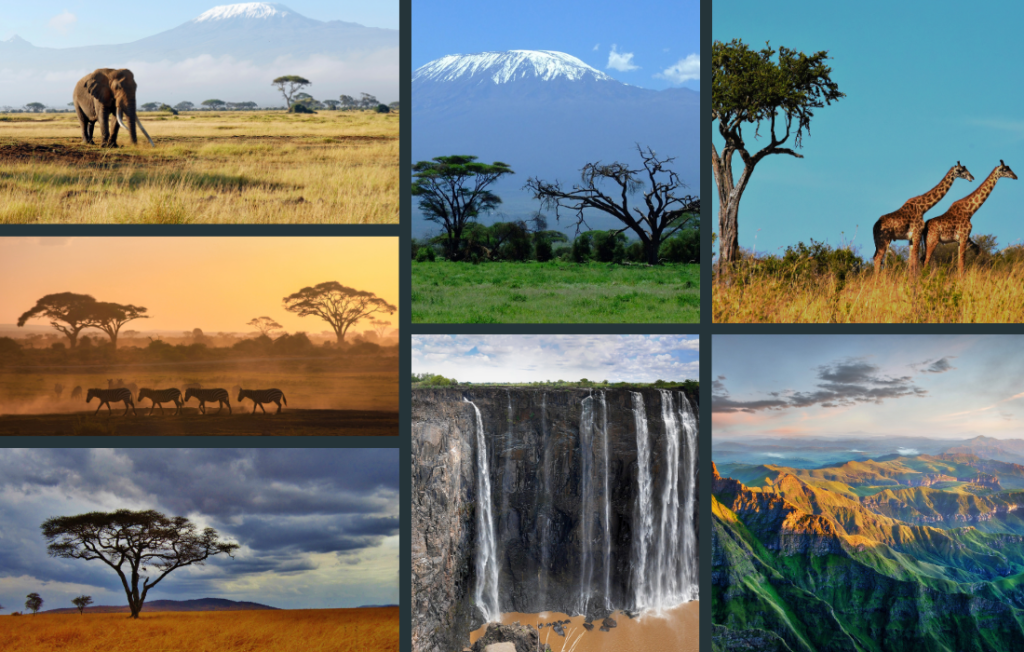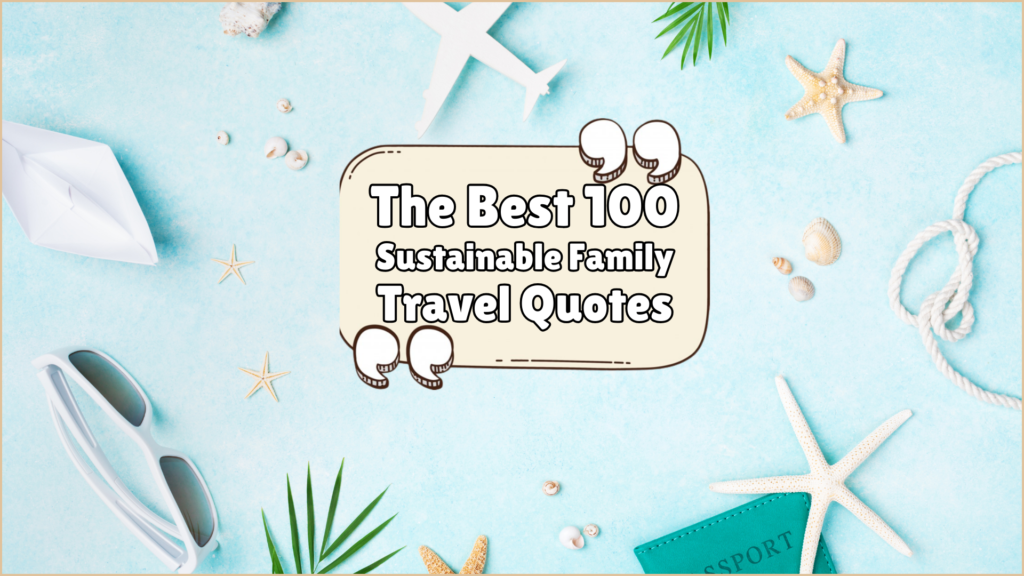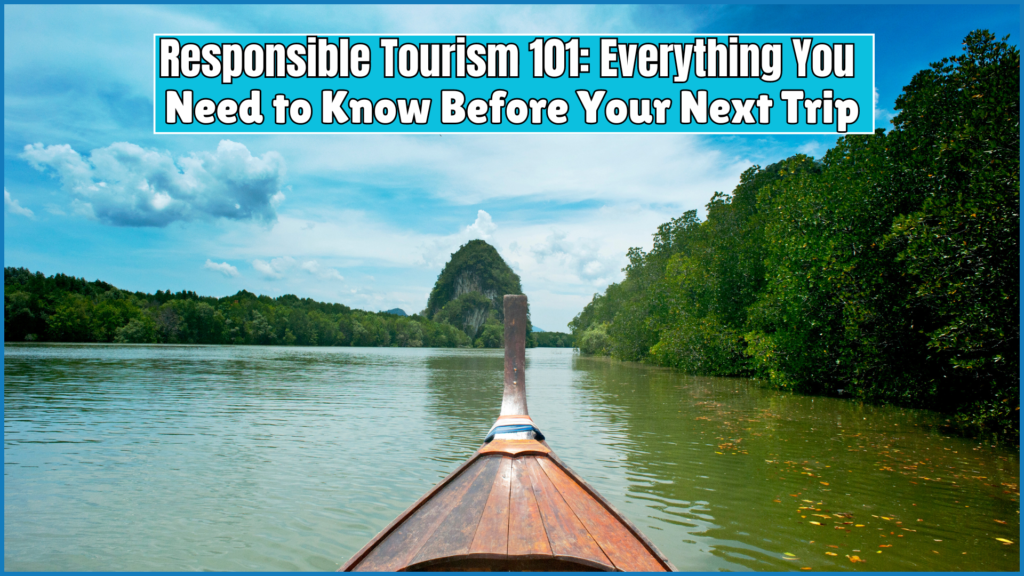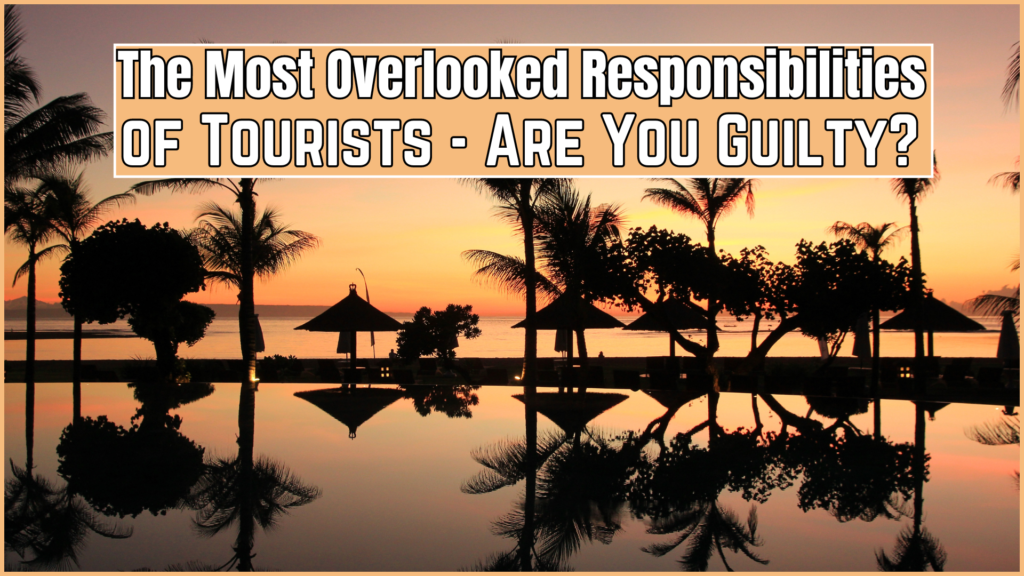Africa is home to several nations making strides towards sustainability, with the top 10 most sustainable countries in Africa leading the way. These sustainable countries in Africa have implemented innovative renewable energy initiatives, environmental conservation efforts, and sustainable development programs to create a greener and more eco-friendly future for the continent. This article will explore the pioneering work of these sustainable countries in Africa and highlight their achievements in renewable energy, environmental protection, and green development in Africa.
Sustainable Countries in Africa: Pioneers of Green Development
Sustainable development in Africa is a multi-faceted concept that encompasses renewable energy, environmental conservation, and eco-friendly economic growth. The top sustainable countries in Africa have recognized the importance of balancing economic progress with environmental protection and have implemented various initiatives to drive green development across the continent.
Defining Sustainability in the African Context
In the African context, sustainability encompasses not only the adoption of renewable energy sources but also the preservation of the continent’s rich biodiversity, natural habitats, and fragile ecosystems. Sustainable development in Africa aims to strike a delicate balance between economic growth and environmental stewardship, ensuring that the continent’s natural resources are utilized in a responsible manner to benefit both present and future generations.
Renewable Energy Initiatives Driving Change
The sustainable countries in Africa have been at the forefront of renewable energy development, harnessing the power of solar, wind, and hydropower to meet the growing energy demands of their populations. These initiatives not only reduce the continent’s reliance on fossil fuels but also create new economic opportunities in the green energy sector, driving sustainable development and job creation.
Environmental Conservation and Ecosystem Protection
Alongside their renewable energy efforts, the leading sustainable countries in Africa have implemented comprehensive policies and programs to protect their natural environments. From establishing national parks and wildlife reserves to promoting sustainable land-use practices and combating deforestation, these nations have demonstrated a strong commitment to preserving the delicate balance of their ecosystems and safeguarding their biodiversity for future generations.
1. Morocco: A Leader in Renewable Energy

As a country blessed with an abundance of renewable energy resources, Morocco has emerged as a leader in the African continent’s push towards sustainable energy development. The nation’s ambitious renewable energy targets and the construction of the Noor Solar Power Complex, one of the largest concentrated solar power plants in the world, have cemented its position as a renewable energy pioneer.
Noor Solar Power Complex: A Shining Example
The Noor Solar Power Complex, located in the Saharan desert of Morocco, is a testament to the country’s commitment to harnessing Morocco’s solar power. This state-of-the-art facility, which covers an area larger than the city of Paris, is designed to generate up to 580 megawatts of clean, renewable electricity, enough to power over 1 million Moroccan homes. The complex’s advanced technology, including the use of parabolic trough collectors and thermal energy storage, ensures that Morocco’s renewable energy is available even when the sun is not shining.
Sustainable Agriculture and Water Management
In addition to its renewable energy initiatives, Morocco has also made significant strides in Morocco sustainable agriculture and water management. The country has implemented innovative water conservation techniques, such as drip irrigation and wastewater recycling, to address the challenges of water scarcity in the region. Furthermore, Morocco has promoted eco-friendly farming practices, including the use of organic fertilizers and the adoption of sustainable irrigation methods, to ensure the long-term viability of its Morocco water management and Morocco sustainable energy resources.
2. Rwanda: A Green Revolution in the Heart of Africa

Rwanda, a small landlocked country in the heart of Africa, has been at the forefront of Rwanda sustainable development and Rwanda’s environmental conservation. The country has implemented a comprehensive Rwanda green economy strategy, investing heavily in Rwanda renewable energy, Rwanda reforestation, and biodiversity protection. Rwanda’s commitment to sustainability has transformed the nation, making it a model for sustainable development in Africa.
At the core of Rwanda’s green revolution is its ambitious renewable energy initiative. The country has set a goal of achieving 100% Rwanda renewable energy by 2030, and it is well on its way to reaching this target. Rwanda has invested heavily in solar, hydropower, and geothermal energy projects, harnessing its natural resources to power its economy in a sustainable manner.
In addition to its renewable energy efforts, Rwanda has also made significant strides in Rwanda reforestation and environmental conservation. The country has implemented a nationwide tree-planting program, aiming to increase its forest cover to 30% by 2020. This initiative has not only beautified the landscape but also contributed to the preservation of Rwanda’s rich biodiversity and the protection of its vital ecosystems.
Rwanda’s commitment to sustainability extends beyond its borders, as the country has become a model for Rwanda’s sustainable development in Africa. The government’s policies and programs have inspired neighboring nations to follow suit, creating a ripple effect of green development across the continent. Rwanda’s success story serves as a testament to the power of bold, visionary leadership and the transformative potential of sustainable practices.
| Key Initiatives in Rwanda’s Green Revolution | Achievements |
|---|---|
| 100% Renewable Energy Target by 2030 | Rwanda has made significant progress in expanding its renewable energy capacity, with a focus on solar, hydropower, and geothermal energy. |
| Nationwide Reforestation Program | Rwanda aims to increase its forest cover to 30% by 2020, contributing to biodiversity conservation and climate change mitigation. |
| Comprehensive Green Economy Strategy | Rwanda has implemented a holistic approach to sustainable development, integrating renewable energy, environmental conservation, and eco-friendly economic growth. |
3. Ethiopia: Harnessing Hydropower and Reforestation

Ethiopia, known for its rich natural resources and diverse ecosystems, has emerged as a leader in sustainable development in Africa. The country has harnessed the power of its extensive waterways to generate clean, renewable hydroelectric energy, with the construction of the Grand Ethiopian Renaissance Dam, one of the largest hydropower projects in Africa. Additionally, Ethiopia has undertaken ambitious reforestation efforts and implemented policies to protect its biodiversity and natural habitats, making it a shining example of environmental stewardship in the region.
The Grand Ethiopian Renaissance Dam
The Grand Ethiopian Renaissance Dam, a colossal hydropower project located on the Blue Nile River, is a testament to Ethiopia’s commitment to sustainable energy and economic development. This remarkable engineering feat, once completed, will be the largest hydroelectric power plant in Africa, with a capacity to generate over 6,000 megawatts of clean, renewable electricity. By harnessing the power of its abundant water resources, Ethiopia is poised to revolutionize its energy landscape and reduce its reliance on fossil fuels, contributing to a more sustainable future for the country and the region.
Afforestation Efforts and Biodiversity Conservation
In addition to its ambitious hydropower initiatives, Ethiopia has also undertaken extensive reforestation efforts to combat deforestation and restore its natural landscapes. Through comprehensive afforestation programs, the country aims to increase its forest cover and protect its biodiversity. These efforts, coupled with the implementation of robust environmental protection policies, have positioned Ethiopia as a leader in biodiversity conservation and environmental stewardship in Africa.
| Sustainable Energy Initiatives in Ethiopia | Key Achievements |
|---|---|
| Grand Ethiopian Renaissance Dam | Largest hydropower project in Africa, generating over 6,000 MW of clean electricity |
| Reforestation and Afforestation Programs | Restoration of natural landscapes and protection of biodiversity |
| Biodiversity Conservation Policies | Comprehensive measures to safeguard Ethiopia’s diverse ecosystems and wildlife |
| Renewable Energy Targets | Aim to generate 65% of electricity from renewable sources by 2030 |
4. Zambia: Where Wildlife Roams and Conservation Thrives

Nestled in the heart of southern Africa, Zambia boasts a tapestry of awe-inspiring natural wonders. Victoria Falls, a UNESCO World Heritage Site, dazzles with its thundering cascades, while vast national parks like South Luangwa and Lower Zambezi teem with an abundance of wildlife. From graceful elephants and majestic lions to zebras traversing the plains, Zambia offers an unforgettable safari experience.
Beyond the Spectacle: Unveiling Zambia’s Eco-Efforts
Zambia’s commitment to conservation goes beyond simply showcasing its natural treasures. Anti-poaching units work tirelessly to protect endangered species like black rhinos and pangolins. Community-based conservation programs empower local villages to become stewards of their environment, fostering a sense of ownership and ensuring the long-term sustainability of these precious ecosystems. Additionally, responsible tourism practices are being actively promoted, encouraging visitors to minimize their environmental footprint and support local communities.
5. Kenya: A Safari Sanctuary Championing Sustainability

Kenya, the land etched in our minds by iconic images of sprawling savannas and the Great Migration, is a frontrunner in eco-tourism. Here, spotting the Big Five (lion, elephant, leopard, rhinoceros, and cape buffalo) in the world-renowned Maasai Mara National Reserve is just the beginning. Explore the otherworldly landscapes of the Great Rift Valley, delve into the rich cultural heritage of the Maasai people, or embark on a thrilling snorkeling adventure amongst vibrant coral reefs.
Kenya’s Green Commitments: A Model for Responsible Tourism
Kenya’s dedication to sustainability extends far beyond its breathtaking landscapes. Conservation conservancies, spearheaded by local communities, play a pivotal role in protecting wildlife corridors and mitigating human-wildlife conflict. Ecotourism lodges, constructed using sustainable materials and incorporating eco-friendly practices, ensure a minimized environmental impact. From responsible waste management initiatives to programs promoting the use of local produce, Kenya is actively fostering a culture of responsible tourism, ensuring visitors leave a positive footprint.
6. South Africa: Where Luxury Meets Sustainability
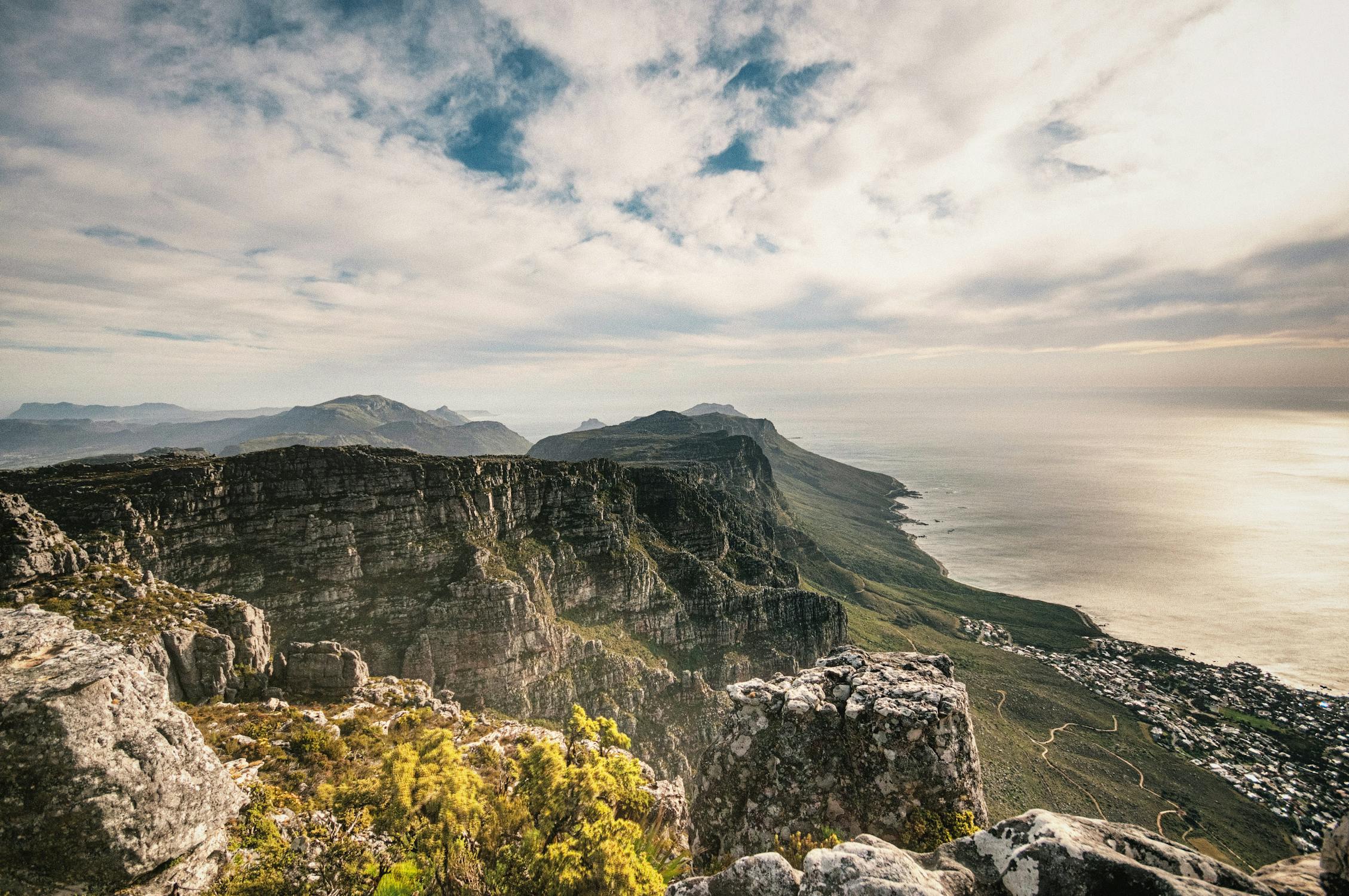
South Africa caters to the discerning eco-conscious traveler seeking a fusion of adventure, relaxation, and responsible practices. Explore the dramatic coastline along the Garden Route, delve into the majestic beauty of Kruger National Park, or embark on a thrilling adventure in the sustainably managed vineyards of Stellenbosch. South Africa offers a diverse range of experiences, all underpinned by a commitment to environmental responsibility.
South Africa’s Sustainable Edge: Pioneering Eco-Luxury
South Africa is at the forefront of pioneering award-winning sustainable accommodations. These luxurious eco-lodges prioritize renewable energy sources like solar power and wind turbines, while implementing water conservation techniques to minimize their environmental impact. Responsible waste management programs are a cornerstone of their operations, and community involvement initiatives ensure local populations benefit from tourism. Conservation efforts also play a vital role, with programs dedicated to protecting endangered species like black rhinos and African penguins.
7. Seychelles: Pristine Paradise Embracing Eco-Luxury

Seychelles, an archipelago of 115 islands scattered like emeralds in the Indian Ocean, epitomizes paradise. Pristine beaches with soft, white sand bordering turquoise waters, lush rainforests teeming with exotic wildlife, and towering granite boulders create a postcard-perfect landscape. Explore the vibrant coral reefs teeming with colorful marine life, dive amongst gentle giants like manta rays, or simply unwind on a secluded beach, soaking up the tranquility.
Seychelles’ Sustainable Seascape: Preserving Paradise
Seychelles understands the importance of preserving its pristine environment. Strict regulations on fishing practices ensure the sustainability of marine life. Conservation efforts play a vital role in protecting endangered species like sea turtles and giant tortoises. Eco-resorts are the norm here, incorporating sustainable architecture with locally sourced materials and employing renewable energy sources like wind and solar power. Additionally, Seychelles actively discourages single-use plastics and promotes responsible waste management practices.
8. Botswana: A Desert Oasis Committed to Conservation

Botswana, a landlocked country in southern Africa, boasts some of the continent’s most spectacular wildlife sanctuaries. The world-renowned Okavango Delta, a UNESCO World Heritage Site, is a lush oasis in the midst of the Kalahari Desert, teeming with diverse wildlife. Explore the vast expanse of the Makgadikgadi Pans, a surreal landscape of salt flats, or embark on a thrilling mokoro (traditional dugout canoe) safari in the canals of the Okavango Delta.
Botswana’s Conservation Pledge: Leading the Way
Botswana has long been a leader in wildlife conservation. Strict anti-poaching measures ensure the protection of endangered species like elephants and rhinos. Community-based conservation programs empower local communities to participate in protecting their natural resources and benefit from tourism activities. Eco-lodges are designed to blend seamlessly with the environment, minimizing their ecological footprint. Botswana’s dedication to responsible tourism sets a high bar for the continent, ensuring visitors experience the magic of its wildlife havens while contributing to their preservation.
9. Algeria: Unveiling the Untamed Beauty of the Sahara

Algeria, the largest country in Africa, boasts a captivating tapestry of landscapes. The vast expanse of the Sahara Desert, with its towering sand dunes and mesmerizing oases, offers a glimpse into a timeless world. Explore the Roman ruins of Timgad, a UNESCO World Heritage Site, delve into the vibrant culture of Berber communities, or embark on a thrilling 4×4 adventure through the rugged terrain.
Algeria’s Emerging Eco-Initiatives: Protecting a Diverse Landscape
While still in its early stages, Algeria is taking steps towards sustainable tourism practices. Ecotourism initiatives are promoting responsible travel experiences, encouraging visitors to minimize their environmental impact, and respecting local traditions. National parks are being established to protect vulnerable ecosystems, and efforts are underway to promote responsible waste management practices. As Algeria’s eco-tourism sector continues to develop, visitors can expect a growing number of eco-lodges and sustainable travel options.
10. Senegal: A Vibrant Tapestry of Culture and Conservation

Senegal, bathed in the warm glow of West Africa, offers a captivating blend of cultural richness and natural beauty. Explore the bustling streets of Dakar, the country’s vibrant capital, delve into the fascinating history of Goree Island, a UNESCO World Heritage Site, or unwind on pristine beaches fringed by swaying palm trees. Embark on a thrilling safari adventure in Niokolo-Koba National Park, a UNESCO Biosphere Reserve, or spot colorful birdlife in the Djoudj National Bird Sanctuary.
Senegal’s Commitment to Community and Conservation
Senegal prioritizes responsible tourism practices that empower local communities. Community-run lodges and guided tours allow visitors to experience the authentic Senegalese culture firsthand while ensuring tourism revenue directly benefits local populations. Conservation efforts focus on protecting endangered species like chimpanzees and rhinos, while initiatives promote sustainable fishing practices to safeguard marine life. Senegal’s dedication to responsible tourism ensures a culturally enriching and ecologically conscious travel experience.
Conclusion: Embracing a Sustainable Future
The pioneering efforts of the top sustainable countries in Africa have demonstrated that it is possible to achieve economic progress while prioritizing environmental protection and sustainability. Through the implementation of innovative renewable energy initiatives, comprehensive environmental conservation programs, and sustainable development strategies, these nations have set an example for the rest of the continent and the world.
As the global community increasingly focuses on the United Nations Sustainable Development Goals, the experiences, and lessons learned from Africa’s sustainable pioneers will be crucial in guiding the path toward a more sustainable future for Africa and the world. The successful implementation of green development in Africa has demonstrated that economic growth and environmental stewardship can coexist, paving the way for a future where renewable energy Africa and environmental conservation in Africa are the driving forces behind a prosperous and sustainable continent.
By embracing this holistic approach to sustainability, the top sustainable countries in Africa have shown that the path to a sustainable future in Africa is attainable, and their example will undoubtedly inspire other nations to follow suit, ultimately leading to a greener and more resilient future for all.
FAQ
What are the top 10 most sustainable countries in Africa?
The top 10 most sustainable countries in Africa are leading the way in renewable energy initiatives, environmental conservation efforts, and sustainable development programs. These pioneering nations are creating a greener and more eco-friendly future for the continent.
How are African countries defining sustainability and driving green development?
Sustainability in the African context encompasses renewable energy, environmental conservation, and eco-friendly economic growth. The top sustainable countries have implemented various initiatives, such as expanding renewable energy sources and preserving biodiversity, to promote green development across the continent.
What is Morocco doing to establish itself as a leader in renewable energy?
Morocco has emerged as a leader in renewable energy in Africa, with the development of the Noor Solar Power Complex, one of the largest concentrated solar power plants in the world. The country has also made significant strides in sustainable agriculture and water management.
How is Rwanda transforming itself through sustainable development?
Rwanda has implemented a comprehensive green economy strategy, investing heavily in renewable energy, reforestation, and biodiversity protection. The country’s commitment to sustainability has made it a model for sustainable development in Africa.
What are Ethiopia’s efforts in harnessing hydropower and reforestation?
Ethiopia has harnessed the power of its extensive waterways to generate clean, renewable hydroelectric energy, with the construction of the Grand Ethiopian Renaissance Dam. Additionally, the country has undertaken ambitious reforestation efforts and implemented policies to protect its biodiversity and natural habitats.
The Best 11 Eco-Friendly Hotels in Brazil available on Expedia
When it comes to experiencing the vibrant beauty of Brazil, eco-conscious travelers increasingly seek out…
The Best 10 Eco-Friendly Hotels in Costa Rica
Eco-friendly hotels in Costa Rica are perfect for travelers seeking a sustainable and luxurious vacation…
The Best 100 Sustainable Family Travel Quotes
Are you yearning to infuse your travels with purpose and impact? Sustainable family travel quotes…
Responsible Tourism 101: Everything You Need to Know Before Your Next Trip
Traveling has always been a cherished human experience, offering glimpses into different cultures, landscapes, and…
The Ethical Tourist: How To Fulfill Your Vital Responsibilities
Traveling is an enriching experience that broadens our horizons, exposes us to diverse cultures, and…
The Most Overlooked Responsibilities of Tourists – Are You Guilty?
Tourism is a powerful force, capable of bringing people together, fostering cultural exchange, and driving…

